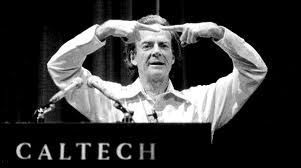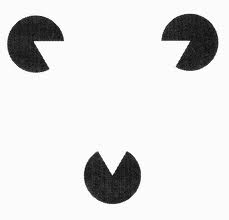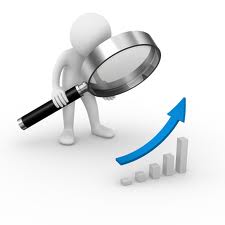Blog Archives
The Law of Unintended Consequences
Posted by Hindol Datta
The Law of Unintended Consequence is that the actions of a central body that might claim omniscient, omnipotent and omnivalent intelligence might, in fact, lead to consequences that are not anticipated or unintended.
The concept of the Invisible Hand as introduced by Adam Smith argued that it is the self-interest of all the market agents that ultimately create a system that maximizes the good for the greatest amount of people.
Robert Merton, a sociologist, studied the law of unintended consequence. In an influential article titled “The Unanticipated Consequences of Purposive Social Action,” Merton identified five sources of unanticipated consequences.
Ignorance makes it difficult and impossible to anticipate the behavior of every element or the system which leads to incomplete analysis.
Errors that might occur when someone uses historical data and applies the context of history into the future. Linear thinking is a great example of an error that we are wrestling with right now – we understand that there are systems, looking back, that emerge exponentially but it is hard to decipher the outcome unless one were to take a leap of faith.
Biases work its way into the study as well. We study a system under the weight of our biases, intentional or unintentional. It is hard to strip that away even if there are different bodies of thought that regard a particular system and how a certain action upon the system would impact it.
Weaved with the element of bias is the element of basic values that may require or prohibit certain actions even if the long-term impact is unfavorable. A good example would be the toll gates established by the FDA to allow drugs to be commercialized. In its aim to provide a safe drug, the policy might be such that the latency of the release of drugs for experiments and commercial purposes are so slow that many patients who might otherwise benefit from the release of the drug lose out.
Finally, he discusses the self-fulfilling prophecy which suggests that tinkering with the elements of a system to avert a catastrophic negative event might in actuality result in the event.
It is important however to acknowledge that unintended consequences do not necessarily lead to a negative outcome. In fact, there are could be unanticipated benefits. A good example is Viagra which started off as a pill to lower blood pressure, but one discovered its potency to solve erectile dysfunctions. The discovery that ships that were sunk became the habitat and formation of very rich coral reefs in shallow waters that led scientists to make new discoveries in the emergence of flora and fauna of these habitats.
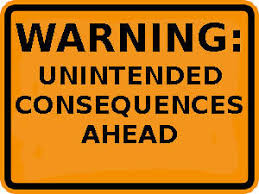
If there are initiatives exercised that are considered “positive initiative” to influence the system in a manner that contribute to the greatest good, it is often the case that these positive initiatives might prove to be catastrophic in the long term. Merton calls the cause of this unanticipated consequence as something called the product of the “relevance paradox” where decision makers thin they know their areas of ignorance regarding an issue, obtain the necessary information to fill that ignorance gap but intentionally or unintentionally neglect or disregard other areas as its relevance to the final outcome is not clear or not lined up to values. He goes on to argue, in a nutshell, that unintended consequences relate to our hubris – we are hardwired to put our short-term interest over long term interest and thus we tinker with the system to surface an effect which later blow back in unexpected forms. Albert Camus has said that “The evil in the world almost always comes of ignorance, and good intentions may do as much harm as malevolence if they lack understanding.”
An interesting emergent property that is related to the law of unintended consequence is the concept of Moral Hazard. It is a concept that individuals have incentives to alter their behavior when their risk or bad decision making is borne of diffused among others. For example:
If you have an insurance policy, you will take more risks than otherwise. The cost of those risks will impact the total economics of the insurance and might lead to costs being distributed from the high-risk takers to the low risk takers.
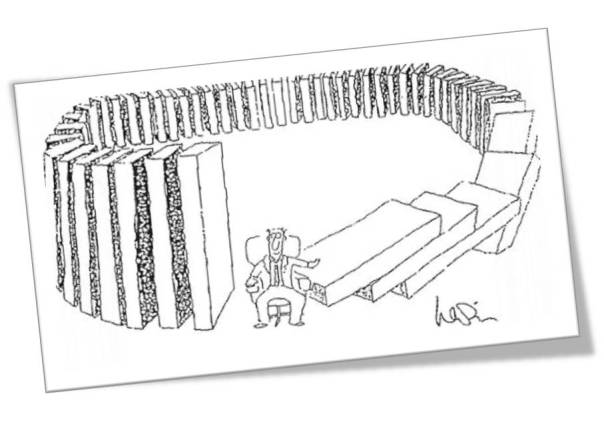
How do the conditions of the moral hazard arise in the first place? There are two important conditions that must hold. First, one party has more information than another party. The information asymmetry thus creates gaps in information and that creates a condition of moral hazard. For example, during 2006 when sub-prime mortgagors extended loans to individuals who had dubitable income and means to pay. The Banks who were buying these mortgages were not aware of it. Thus, they ended up holding a lot of toxic loans due to information asymmetry. Second, is the existence of an understanding that might affect the behavior of two agents. If a child knows that they are going to get bailed out by the parents, he/she might take some risks that he/she would otherwise might not have taken.
To counter the possibility of unintended consequences, it is important to raise our thinking to second-order thinking. Most of our thinking is simplistic and is based on opinions and not too well grounded in facts. There are a lot of biases that enter first order thinking and in fact, all of the elements that Merton touches on enters it – namely, ignorance, biases, errors, personal value systems and teleological thinking. Hence, it is important to get into second-order thinking – namely, the reasoning process is surfaced by looking at interactions of elements, temporal impacts and other system dynamics. We had mentioned earlier that it is still difficult to fully wrestle all the elements of emergent systems through the best of second-order thinking simply because the dynamics of a complex adaptive system or complex physical system would deny us that crown of competence. However, this fact suggests that we step away from simple, easy and defendable heuristics to measure and gauge complex systems.
Posted in Business Process, emergent systems, Learning Organization, Learning Process, Management Models, Order, Social Dynamics, Unitended Consequence
Comments Off on The Law of Unintended Consequences
Tags: CAS, Complexity, experiments, innovation, intuition, open source, slippery slope, Systems design, Systems Thinking, uncertainty, unintended consequence
Complex Physical and Adaptive Systems
Posted by Hindol Datta
There are two models in complexity. Complex Physical Systems and Complex Adaptive Systems! For us to grasp the patterns that are evolving, and much of it seemingly out of our control – it is important to understand both these models. One could argue that these models are mutually exclusive. While the existing body of literature might be inclined toward supporting that argument, we also find some degree of overlap that makes our understanding of complexity unstable. And instability is not to be construed as a bad thing! We might operate in a deterministic framework, and often, we might operate in the realms of a gradient understanding of volatility associated with outcomes. Keeping this in mind would be helpful as we deep dive into the two models. What we hope is that our understanding of these models would raise questions and establish mental frameworks for intentional choices that we are led to make by the system or make to influence the evolution of the system.
Complex Physical Systems (CPS)
Complex Physical Systems are bounded by certain laws. If there are initial conditions or elements in the system, there is a degree of predictability and determinism associated with the behavior of the elements governing the overarching laws of the system. Despite the tautological nature of the term (Complexity Physical System) which suggests a physical boundary, the late 1900’s surfaced some nuances to this model. In other words, if there is a slight and an arbitrary variation in the initial conditions, the outcome could be significantly different from expectations. The assumption of determinism is put to the sword. The notion that behaviors will follow established trajectories if rules are established and the laws are defined have been put to test. These discoveries by introspection offers an insight into the developmental block of complex physical systems and how a better understanding of it will enable us to acknowledge such systems when we see it and thereafter allow us to establish certain toll-gates and actions to navigate, to the extent possible, to narrow the region of uncertainty around outcomes.
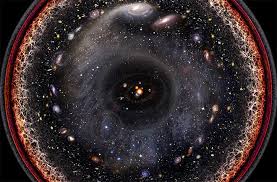
The universe is designed as a complex physical system. Just imagine! Let this sink in a bit. A complex physical system might be regarded relatively simpler than a complex adaptive system. And with that in mind, once again …the universe is a complex physical system. We are awed by the vastness and scale of the universe, we regard the skies with an illustrious reverence and we wonder and ruminate on what lies beyond the frontiers of a universe, if anything. Really, there is nothing bigger than the universe in the physical realm and yet we regard it as a simple system. A “Simple” Complex Physical System. In fact, the behavior of ants that lead to the sustainability of an ant colony, is significantly more complex: and we mean by orders of magnitude.
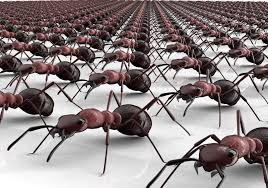
Complexity behavior in nature reflects the tendency of large systems with many components to evolve into a poised “critical” state where minor disturbances or arbitrary changes in initial conditions can create a seemingly catastrophic impact on the overall system such that system changes significantly. And that happens not by some invisible hand or some uber design. What is fundamental to understanding complex systems is to understand that complexity is defined as the variability of the system. Depending on our lens, the scale of variability could change and that might lead to different apparatus that might be required to understand the system. Thus, determinism is not the measure: Stephen Jay Gould has argued that it is virtually impossible to predict the future. We have hindsight explanatory powers but not predictable powers. Hence, systems that start from the initial state over time might represent an outcome that is distinguishable in form and content from the original state. We see complex physical systems all around us. Snowflakes, patterns on coastlines, waves crashing on a beach, rain, etc.
Complex Adaptive Systems (CAS)
Complex adaptive systems, on the contrary, are learning systems that evolve. They are composed of elements which are called agents that interact with one another and adapt in response to the interactions.

Markets are a good example of complex adaptive systems at work.
CAS agents have three levels of activity. As described by Johnson in Complexity Theory: A Short Introduction – the three levels of activity are:
- Performance (moment by moment capabilities): This establishes the locus of all behavioral elements that signify the agent at a given point of time and thereafter establishes triggers or responses. For example, if an object is approaching and the response of the agent is to run, that would constitute a performance if-then outcome. Alternatively, it could be signals driven – namely, an ant emits a certain scent when it finds food: other ants will catch on that trail and act, en masse, to follow the trail. Thus, an agent or an actor in an adaptive system has detectors which allows them to capture signals from the environment for internal processing and it also has the effectors that translate the processing to higher order signals that influence other agents to behave in certain ways in the environment. The signal is the scent that creates these interactions and thus the rubric of a complex adaptive system.
- Credit assignment (rating the usefulness of available capabilities): When the agent gathers experience over time, the agent will start to rely heavily on certain rules or heuristics that they have found useful. It is also typical that these rules may not be the best rules, but it could be rules that are a result of first discovery and thus these rules stay. Agents would rank these rules in some sequential order and perhaps in an ordinal ranking to determine what is the best rule to fall back on under certain situations. This is the crux of decision making. However, there are also times when it is difficult to assign a rank to a rule especially if an action is setting or laying the groundwork for a future course of other actions. A spider weaving a web might be regarded as an example of an agent expending energy with the hope that she will get some food. This is a stage setting assignment that agents have to undergo as well. One of the common models used to describe this best is called the bucket-brigade algorithm which essentially states that the strength of the rule depends on the success of the overall system and the agents that constitute it. In other words, all the predecessors and successors need to be aware of only the strengths of the previous and following agent and that is done by some sort of number assignment that becomes stronger from the beginning of the origin of the system to the end of the system. If there is a final valuable end-product, then the pathway of the rules reflect success. Once again, it is conceivable that this might not be the optimal pathway but a satisficing pathway to result in a better system.
- Rule discovery (generating new capabilities): Performance and credit assignment in agent behavior suggest that the agents are governed by a certain bias. If the agents have been successful following certain rules, they would be inclined toward following those rules all the time. As noted, rules might not be optimal but satisficing. Is improvement a matter of just incremental changes to the process? We do see major leaps in improvement … so how and why does this happen? In other words, someone in the process have decided to take a different rule despite their experiences. It could have been an accident or very intentional.
One of the theories that have been presented is that of building blocks. CAS innovation is a result of reconfiguring the various components in new ways. One quips that if energy is neither created, nor destroyed …then everything that exists today or will exist tomorrow is nothing but a reconfiguration of energy in new ways. All of tomorrow resides in today … just patiently waiting to be discovered. Agents create hypotheses and experiment in the petri dish by reconfiguring their experiences and other agent’s experiences to formulate hypotheses and the runway for discovery. In other words, there is a collaboration element that comes into play where the interaction of the various agents and their assignment as a group to a rule also sets the stepping stone for potential leaps in innovation.
Another key characteristic of CAS is that the elements are constituted in a hierarchical order. Combinations of agents at a lower level result in a set of agents higher up and so on and so forth. Thus, agents in higher hierarchical orders take on some of the properties of the lower orders but it also includes the interaction rules that distinguishes the higher order from the lower order.
Posted in Business Process, Chaos, Complexity, Innovation, Learning Organization, Learning Process, Model Thinking, Order, Organization Architecture, Social Dynamics
Comments Off on Complex Physical and Adaptive Systems
Tags: adaptive, CAS, Complexity, CPS, creativity, economics, innovation, open source, platform, Systems Thinking, transparency, uncertainty
MECE Framework, Analysis, Synthesis and Organization Architecture toward Problem-Solving
Posted by Hindol Datta
MECE is a thought tool that has been systematically used in McKinsey. It stands for Mutually Exclusive, Comprehensively Exhaustive. We will go into both these components in detail and then relate this to the dynamics of an organization mindset. The presumption in this note is that the organization mindset has been engraved over time or is being driven by the leadership. We are looking at MECE since it represents a tool used by the most blue chip consulting firm in the world. And while doing that, we will , by the end of the article, arrive at the conclusion that this framework alone will not be the panacea to all investigative methodology to assess a problem – rather, this framework has to reconcile with the active knowledge that most things do not fall in the MECE framework, and thus an additional system framework is needed to amplify our understanding for problem solving and leaving room for chance.
So to apply the MECE technique, first you define the problem that you are solving for. Once you are past the definition phase, well – you are now ready to apply the MECE framework.
MECE is a framework used to organize information which is:
- Mutually exclusive: Information should be grouped into categories so that each category is separate and distinct without any overlap; and
- Collectively exhaustive: All of the categories taken together should deal with all possible options without leaving any gaps.
In other words, once you have defined a problem – you figure out the broad categories that relate to the problem and then brainstorm through ALL of the options associated with the categories. So think of it as a mental construct that you move across a horizontal line with different well defined shades representing categories, and each of those partitions of shades have a vertical construct with all of the options that exhaustively explain those shades. Once you have gone through that exercise, which is no mean feat – you will be then looking at an artifact that addresses the problem. And after you have done that, you individually look at every set of options and its relationship to the distinctive category … and hopefully you are well on your path to coming up with relevant solutions.
Now some may argue that my understanding of MECE is very simplistic. In fact, it may very well be. But I can assure you that it captures the essence of very widely used framework in consulting organizations. And this framework has been imported to large organizations and have cascaded down to different scale organizations ever since.
Here is a link that would give you a deeper understanding of the MECE framework:
http://firmsconsulting.com/2010/09/22/a-complete-mckinsey-style-mece-decision-tree/
Now we are going to dig a little deeper. Allow me to digress and take you down a path less travelled. We will circle back to MECE and organizational leadership in a few moments. One of the memorable quotes that have left a lasting impression is by a great Nobel Prize winning physicist, Richard Feynman.
“I have a friend who’s an artist and has sometimes taken a view which I don’t agree with very well. He’ll hold up a flower and say “look how beautiful it is,” and I’ll agree. Then he says “I as an artist can see how beautiful this is but you as a scientist takes this all apart and it becomes a dull thing,” and I think that he’s kind of nutty. First of all, the beauty that he sees is available to other people and to me too, I believe. Although I may not be quite as refined aesthetically as he is … I can appreciate the beauty of a flower. At the same time, I see much more about the flower than he sees. I could imagine the cells in there, the complicated actions inside, which also have a beauty. I mean it’s not just beauty at this dimension, at one centimeter; there’s also beauty at smaller dimensions, the inner structure, also the processes. The fact that the colors in the flower evolved in order to attract insects to pollinate it is interesting; it means that insects can see the color. It adds a question: does this aesthetic sense also exist in the lower forms? Why is it aesthetic? All kinds of interesting questions which the science knowledge only adds to theexcitement, the mystery and the awe of a flower! It only adds. I don’t understand how it subtracts.”
The above quote by Feynman lays the groundwork to understand two different approaches – namely, the artist approaches the observation of the flower from the synthetic standpoint, whereas Feynman approaches it from an analytic standpoint. Both do not offer views that are antithetical to one another: in fact, you need both to gather a holistic view and arrive at a conclusion – the sum is greater than the parts. Feynman does not address the essence of beauty that the artist puts forth; he looks at the beauty of how the components and its mechanics interact well and how it adds to our understanding of the flower. This is very important because the following dialogue with explore another concept to drive this difference between analysis and synthesis home.
There are two possible ways of gaining knowledge. Either we can proceed from the construction of the flower ( the Feynman method) , and then seek to determine the laws of the mutual interaction of its parts as well as its response to external stimuli; or we can begin with what the flower accomplishes and then attempt to account for this. By the first route we infer effects from given causes, whereas by the second route we seek causes of given effects. We can call the first route synthetic, and the second analytic.
We can easily see how the cause effect relationship is translated into a relationship between the analytic and synthetic foundation.
A system’s internal processes — i.e. the interactions between its parts — are regarded as the cause of what the system, as a unit, performs. What the system performs is thus the effect. From these very relationships we can immediately recognize the requirements for the application of the analytic and synthetic methods.
The synthetic approach — i.e. to infer effects on the basis of given causes — is therefore appropriate when the laws and principles governing a system’s internal processes are known, but when we lack a detailed picture of how the system behaves as a whole.
Another example … we do not have a very good understanding of the long-term dynamics of galactic systems, nor even of our own solar system. This is because we cannot observe these objects for the thousands or even millions of years which would be needed in order to map their overall behavior.
However, we do know something about the principles, which govern these dynamics, i.e. gravitational interaction between the stars and planets respectively. We can therefore apply a synthetic procedure in order to simulate the gross dynamics of these objects. In practice, this is done with the use of computer models which calculate the interaction of system parts over long, simulated time periods.
The analytical approach — drawing conclusions about causes on the basis of effects – is appropriate when a system’s overall behavior is known, but when we do not have clear or certain knowledge about the system’s internal processes or the principles governing these. On the other hand, there are a great many systems for which we neither have a clear and certain conception of how they behave as a whole, nor fully understand the principles at work which cause that behavior. Organizational behavior is one such example since it introduces the fickle spirits of the employees that, at an aggregate create a distinct character in the organization.
Leibniz was among the first to define analysis and synthesis as modern methodological concepts:
“Synthesis … is the process in which we begin from principles and [proceed to] build up theorems and problems … while analysis is the process in which we begin with a given conclusion or proposed problem and seek the principles by which we may demonstrate the conclusion or solve the problem.”
So we have wandered down this path of analysis and synthesis and now we will circle back to MECE and the organization. MECE framework is a prime example of the application of analytics in an organization structure. The underlying hypothesis is that the application of the framework will illuminate and add clarity to understanding the problems that we are solving for. But here is the problem: the approach could lead to paralysis by analysis. If one were to apply this framework, one would lose itself in the weeds whereas it is just as important to view the forest. So organizations have to step back and assess at what point we stop the analysis i.e. we have gathered information and at what point we set our roads to discovering a set of principles that will govern the action to solve a set of problems. It is almost always impossible to gather all information to make the best decision – especially where speed, iteration, distinguishing from the herd quickly, stamping a clear brand etc. are becoming the hallmarks of great organizations.
Applying the synthetic principle in addition to “MECE think” leaves room for error and sub-optimal solutions. But it crowd sources the limitless power of imagination and pattern thinking that will allow the organization to make critical breakthroughs in innovative thinking. It is thus important that both the principles are promulgated by the leadership as coexisting principles that drive an organization forward. It ignites employee engagement, and it imputes the stochastic errors that result when employees may not have all the MECE conditions checked off.
In conclusion, it is important that the organization and its leadership set its architecture upon the traditional pillars of analysis and synthesis – MECE and systems thinking. And this architecture serves to be the springboard for the employees that allows for accidental discoveries, flights of imagination, Nietzschean leaps that transform the organization toward the pathway of innovation, while still grounded upon the bedrock of facts and empirical observations.
Posted in Business Process, Employee Engagement, Innovation, Leadership, Learning Organization, Learning Process, Management Models, Model Thinking, Motivation, Organization Architecture, Recognition, Risk Management, Social Dynamics, Social Systems
Tags: Analysis, creativity, employee engagement, employee recognition, innovation, learning organization, mass psychology, Mental Construct, Mental Models, organization architecture, social network, social systems, Synthesis, Systems Thinking, talent management, uncertainty

